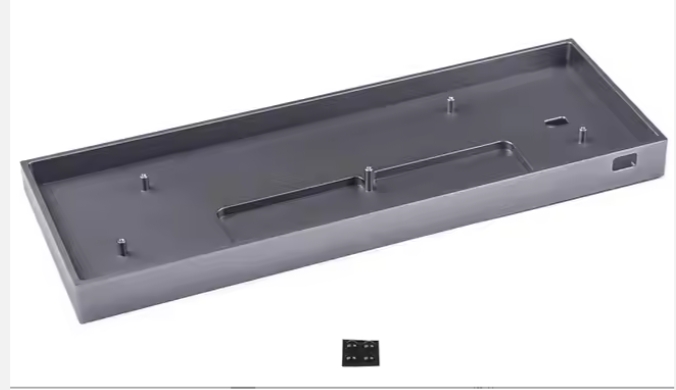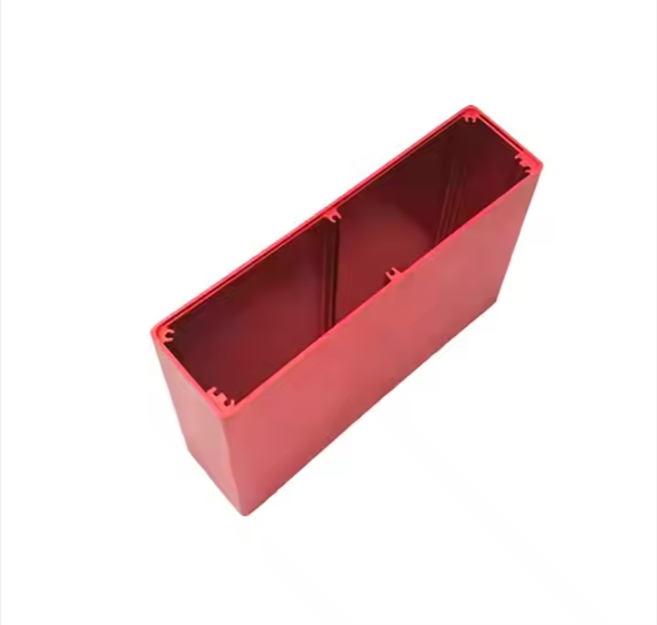In the realm of Earth observation, weather detection equipment acts as the “intelligent eye” that deciphers nature’s secrets. Its enclosure must withstand extreme environments—subzero temperatures, salt spray, UV radiation—while ensuring submillimeter precision for sensitive sensors. When a global environmental monitoring manufacturer developed a next-generation polar weather station, traditional sheet metal fabrication failed to meet structural stability requirements at -50°C. CNC-machined aluminum alloy emerged as the breakthrough solution.

I. Extreme Demands Drive Manufacturing Innovation
The design specifications for the Arctic detection chamber bordered on the extreme:
- Maintain ±0.1mm deformation under 80°C temperature fluctuations
- Achieve 2,000-hour salt spray resistance per ASTM B117-19 standards
- Ensure ≤0.05mm positioning accuracy for 12 sensor interfaces
- Limit total weight to 15kg
Traditional welded assemblies faced critical flaws: weld-induced stress deformation, inconsistent anti-corrosion coatings, and overweight due to complex internal structures. The team redesigned the chamber as a monolithic Al 6061-T6 Al5052 aluminum structure via topology optimization—a feat that demanded unprecedented machining precision.

II. Precision Engineering with 5-Axis CNC
The manufacturer deployed a 5-axis CNC machining center for integrated fabrication, featuring three key innovations:
1. Intelligent Fixturing
A vacuum adsorption system with adaptive positioning modules achieved 0.01mm repeatability on a 600×400×300mm aluminum billet, minimizing vibration during thin-wall machining (minimum wall thickness: 2.5mm).
2. Dynamic Machining Strategies
- Roughing: φ20mm corn cob cutter at 8,000 RPM removed 90% material
- Semi-finishing: φ10mm ball-nose tool released residual stresses
- Finishing: φ6mm diamond-coated tool achieved Ra0.8 surface finish at 0.15mm cutting depth
3. Thermal Deformation Control
A proprietary algorithm adjusted toolpaths in real time using machine temperature data, limiting thermal errors to 5μm.

III. Process Innovations Deliver Breakthrough Performance
The manufacturing workflow combined multiple advancements:
1. Bio-Inspired Weight Reduction
Parametric programming created gradient honeycomb structures (1.5–3mm pores) in non-critical areas, reducing weight by 23% without compromising rigidity.
2. Functional Surface Engineering
- Machined M6 threaded holes (H6 tolerance) and φ18H7 sensor mounts in a single setup
- Integrated in-machine hard anodizing (50μm thickness, HV400 hardness)
3. Digital Twin Verification
Machining simulations predicted tool collision risks, slashing actual processing time from 38 to 26 hours while achieving 78% material utilization.
IV. Redefining Industry Benchmarks
Third-party tests confirmed revolutionary performance:
- 0.07mm deformation during low-temperature cycling—5x better than traditional methods
- 2,200+ hours salt spray resistance with zero substrate corrosion
- 0.03mm sensor alignment repeatability
- 14.2kg total weight, exceeding design targets
The impact was immediate: CNC-machined aluminum enclosures now account for 41% of new global weather stations (up from 12% in 2022), with maintenance costs dropping 60%, per the International Meteorological Equipment Association.
V. From Precision to Climate Intelligence
This manufacturing leap is sparking broader innovations:
- Embedded Sensing: CNC-machined slots for MEMS sensors enable real-time stress monitoring
- Climate Adaptation: Finite element-optimized cooling fins auto-balance thermal loads in deserts and polar regions
- Modular Design: Standardized interfaces support rapid hardware upgrades
After deploying these enclosures, a Nordic meteorological agency reported polar data collection rates jumping from 83% to 97%, providing critical insights into glacial retreat.
Conclusion

KEVORAPID: Your Professional
KEVORAPID Instrument Enclosure has a range of door locking mechanisms, preventing unauthorized access, with handles for easy opening of the door.
KEVORAPID Instrument Enclosure, also called an electronic instrument enclosure or instrument enclosure box, is made from steel, stainless steel (304 or 316L), or galvanized steel. It is specifically designed to protect instruments, alongside other electronic instruments from damage.